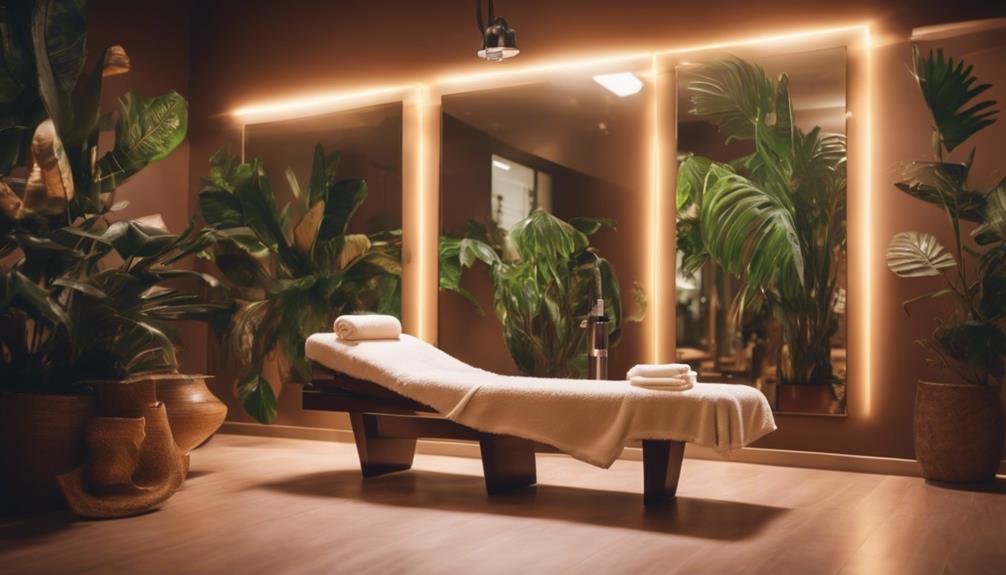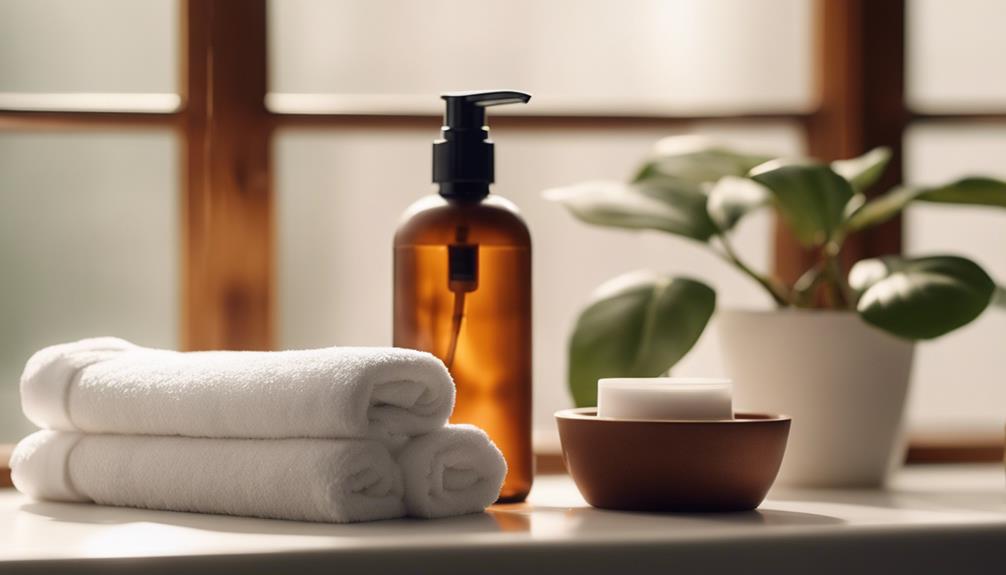Looking for that perfect tan? Begin by determining your skin type—it’s similar to choosing the right ice cream flavor! Exfoliate the day before, and make sure to hydrate your skin for optimal results. When tanning, start slowly with shorter sessions. Remember to always wear protective goggles to protect your eyes, and be sure to clean the tanning bed after each use. Utilize indoor tanning lotion to enhance your glow and establish a tanning schedule with breaks to prevent burns. Stay tuned for additional tips and tricks to maintain that sun-kissed appearance!
Key Takeaways
- Assess your skin type and consult a tanning professional for a personalized tanning plan to avoid sunburn.
- Exfoliate and moisturize your skin 24 hours before your session to achieve optimal tanning results.
- Start with shorter tanning sessions, gradually increasing exposure while tracking duration and setting a timer.
- Always use protective eyewear with UV coverage to shield your eyes from harmful rays during tanning.
Skin Assessment and Preparation
Before you hit the tanning bed, it's crucial to assess your skin type to determine the safest and most effective tanning approach.
Think of your skin like a unique canvas—some are more sensitive while others can handle a bit more sun. Consulting a tanning professional can help you nail down your specific type.
Once you know this, you can create a personalized tanning schedule that'll keep you glowing without the risk of sunburn.
Don't forget to exfoliate your skin 24 hours before tanning, and slather on some moisturizer to keep it hydrated.
Just like you wouldn't paint a canvas without preparing it, you want your skin ready for that perfect tan!
Are you excited about your glow-up?
Tanning Session Scheduling
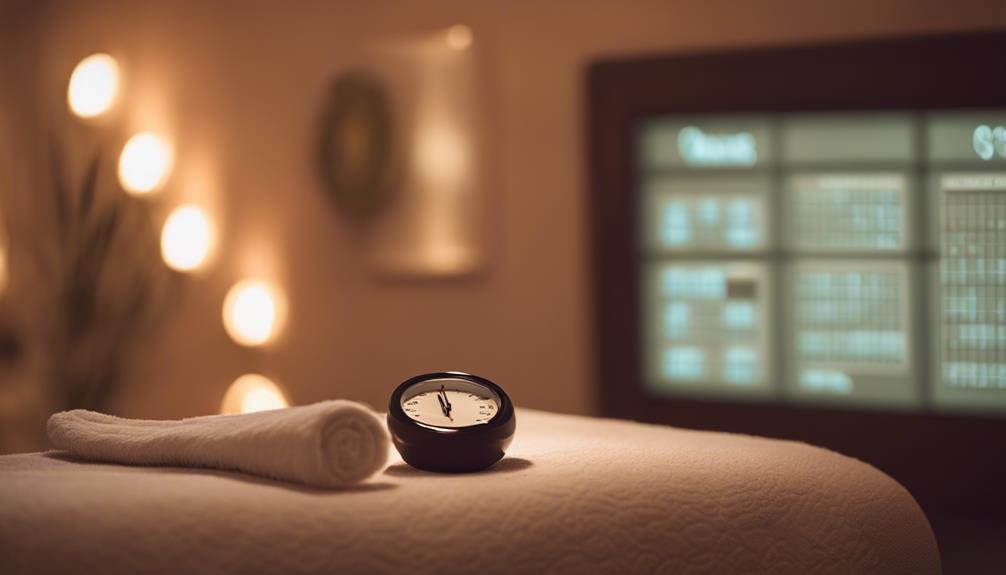
To achieve the best results from your tanning sessions, it's essential to start with shorter exposure times and gradually increase them based on your skin's response. Think of it like building up your stamina for a race; you wouldn't sprint right out of the gate, right?
Map out your tanning schedule, giving your skin at least 48 hours to recover between sessions. Initially, limit yourself to 2-4 times a week, adjusting as you see how your skin reacts.
Keep track of your tanning duration, and set a timer so you don't lose track of time—nobody wants to turn into a lobster!
And remember, always wear protective eyewear to keep your eyes safe from those pesky UV rays!
Bed Maintenance and Safety
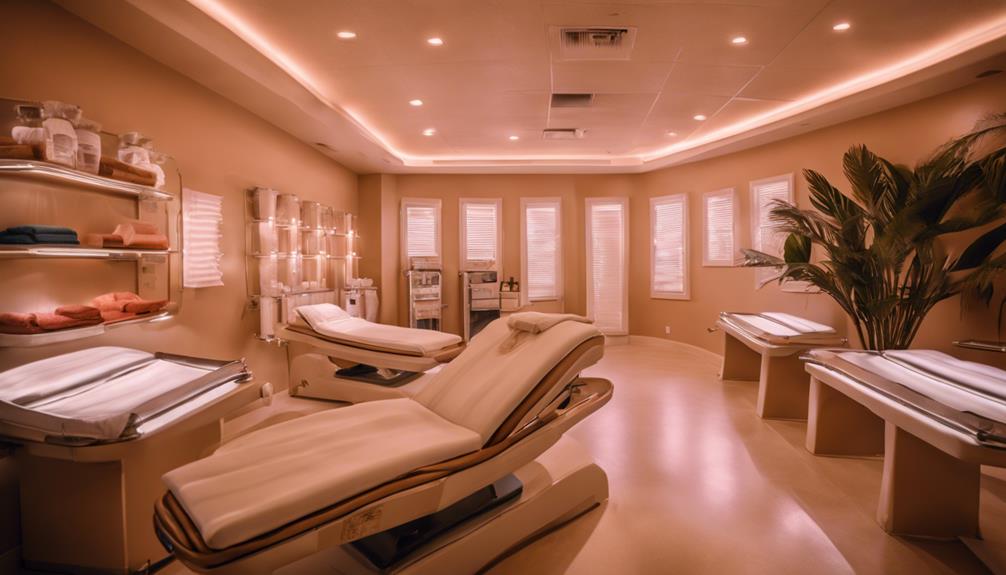
Regular maintenance of tanning beds is essential for guaranteeing both your safety and the effectiveness of your tanning sessions. You wouldn't want to sit in a messy chair, right? Keeping your tanning bed clean and functioning well is just as important!
Here are a few tips to keep things safe and effective:
- Clean the bed after every use with EPA-approved disinfectants to prevent skin infections.
- Replace bulbs every 500 hours to guarantee the UV output is strong and safe.
- Inspect equipment regularly for any wear and tear—it's better to be safe than sorry!
- Guarantee proper ventilation in the tanning area to avoid overheating—nobody likes a sauna when they're trying to tan!
Stay safe and happy tanning!
Eye Protection Essentials
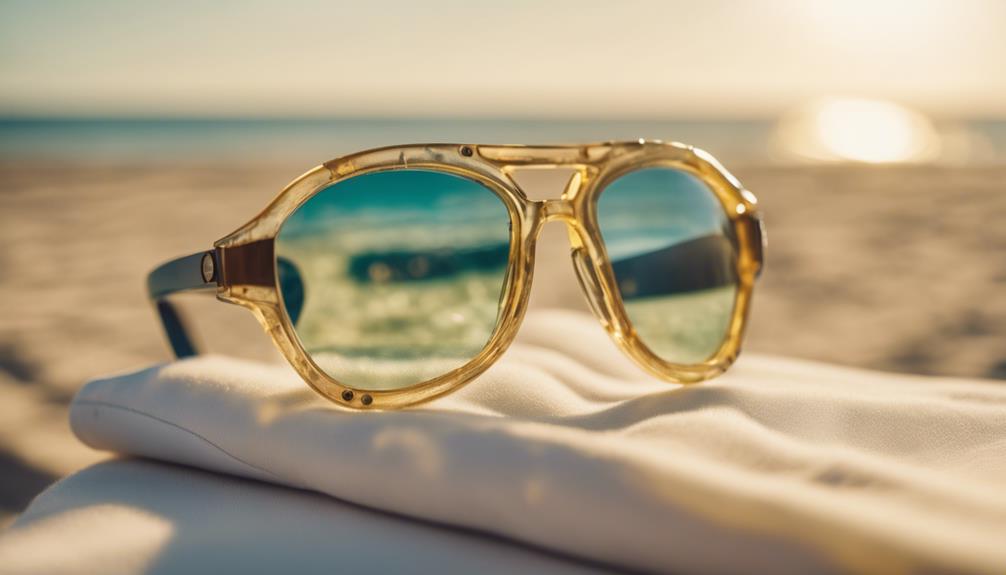
Protecting your eyes during tanning sessions is essential, as harmful UV rays can cause serious damage without proper eyewear. You wouldn't stare directly at the sun, right? The same logic applies here! Make sure you wear tanning bed goggles that fit well and block those pesky rays.
| Goggle Feature | Benefit | Why It Matters |
|---|---|---|
| Full UV Coverage | Protects your eyes | Prevents long-term damage |
| Anti-Fog Lens | Clear vision | You want to see the tan you're getting! |
| Comfort Fit | Easy to wear | No distractions during your session |
| Durable Material | Long-lasting | Saves you money in the long run |
Product Recommendations
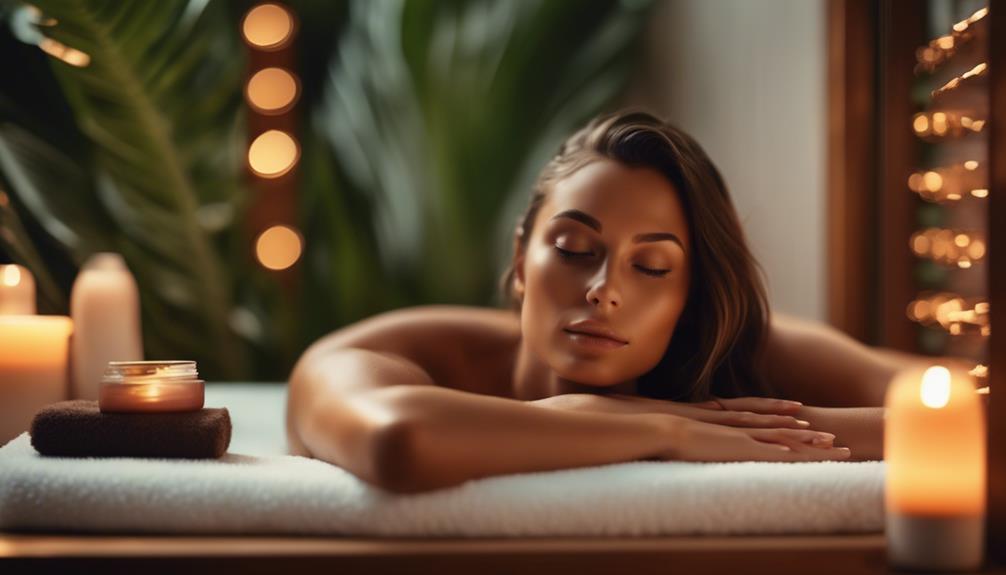
Choosing the right indoor tanning products can greatly enhance your results and prolong your tan. You don't want to walk out looking like a lobster, right?
So, here are some must-have products that'll make your tanning experience a breeze:
- Indoor Tanning Lotion – These lotions hydrate your skin and boost your tan. Look for ones with bronzers for that extra glow!
- Tan Extender – Use this after tanning to help maintain your beautiful color while keeping your skin soft.
- Moisturizer – A good moisturizer is essential before and after tanning to keep your skin healthy and glowing.
- Sunscreen – If you plan to head outside, always protect your skin with a broad-spectrum sunscreen.
Frequently Asked Questions
How Can I Tell if I'm Tanning Too Much?
You can tell you're tanning too much if your skin feels sore, looks red, or develops blisters. Monitor your skin's reaction closely and reduce your sessions if you notice any of these signs.
What Should I Do if I Get Sunburned From Tanning?
If you get sunburned from tanning, apply a soothing aloe vera gel or after-sun lotion. Stay hydrated, avoid further sun exposure, and let your skin heal. If severe, consult a healthcare professional for advice.
Can I Tan With Makeup or Self-Tanner On?
You shouldn't tan with makeup or self-tanner on. They can block UV rays, leading to uneven results. Always exfoliate and cleanse your skin beforehand for the best tanning experience and a more even glow.
How Do I Choose the Right Tanning Bed for My Skin?
Choosing the right tanning bed's like picking a cozy spot in the sun. Assess your skin type, consult professionals, and select beds with adjustable settings to guarantee you achieve that golden glow safely and effectively. To develop healthy tanning bed habits, it’s important to start with small sessions and gradually increase the time as your skin builds up a tolerance to the UV rays. It’s also crucial to use protective goggles and lotions specifically designed for indoor tanning to shield your eyes and moisturize your skin. By following these tips and staying consistent with your tanning routine, you can achieve a beautiful bronzed look without compromising the health of your skin. Remember to always monitor your skin for any signs of irritation or overexposure, as maintaining a healthy balance is key. Stay hydrated and exfoliate regularly to keep your skin smooth and radiant, enhancing your results. By prioritizing these practices, you can master your tanning bed experience, ensuring a safe, long-lasting glow that complements your natural beauty.
Is It Safe to Tan While Pregnant or Nursing?
It's generally advised that you avoid tanning while pregnant or nursing. Your skin's sensitivity increases, and potential risks to your baby aren't fully understood. Always consult your healthcare provider for personalized advice regarding tanning during this time.
Conclusion
So, there you have it! By following these tips, you'll be on your way to achieving that glowing tan that could make even the sun a little jealous.
Remember, it's all about finding what works best for you—like a treasure map leading you to your perfect shade!
Keep your skin safe, schedule your sessions wisely, and never forget those essential eye protections.
Now go out there and shine like the star you are!
